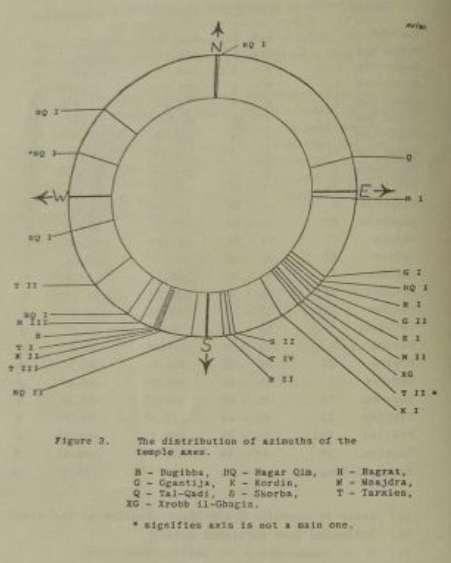The Temples of Malta
For a far too long, the megalithic temples of Malta were known to insiders only. But since they featured promonently in episode 3 of the Netflix film Ancient Apocalypse, millions of viewers around the world have been made aware of their important role in the history of humanity.
Since excavations in Malta started in the nineteenth century, 66 temple have been recorded at 43 sites, dispersed all over the two islands of Malta and Gozo. This large number of megalithic ruins on a relatively small land area has been the cause of much speculation. The book Sirius, the Star of the Maltese Temples presents a logical and elegant solution to the riddles this ancient civilisation present.

Not least among these are their great number and the patterns of their orientations toward the southeast and southwest (see diagram below). Applying a mathematical probability test, it was established by the Maltese university professors George Agius and Frank Ventura that the distribution of these orientations was not random, but that a principle, a mechanism was at play. As no fixed, measurable mechanism can be detected behind the vagaries of nature on earth, the movement of the stars in the sky presented the only answer. Once the mechanism was found, a star, Sirius, came into focus. This outcome also presented the astronomical dating principle for all the temples whose ground plan had been measured. By this method of dating, they appear to be much older than has commonly been thought. On a par with the megalithic site of Göbekli Tepe in Turkey, temple building in Malta began in the Mesolithic, the period that started immediately after the last Ice Age. The implications of this discovery for our perception of what ancient humans could accomplish, is revolutionary. From very early onwards they were architects, artists and astronomers.
The Maltese temples are unique in their peculiar, oval design and unconventional beauty. To give the viewers a taste of this, some photographs of the most famous temples are presented here. The photos of the ‘lesser temples and lost sites’ give an impression of a landscape that during the Stone Age must been covered with temple buildings.
By clicking on a temple name, you will be directed to their separate pages: Ggantija; Hagar Qim; Mnajdra; Ta Hagrat; Skorba; lesser temples and lost sites
Lenie Reedijk
Contact:
lenie.reedijk@gmail.com
Kattenborg 5
NL-7151XG Eibergen
The Netherlands
Chamber of Commerce:
69501750

